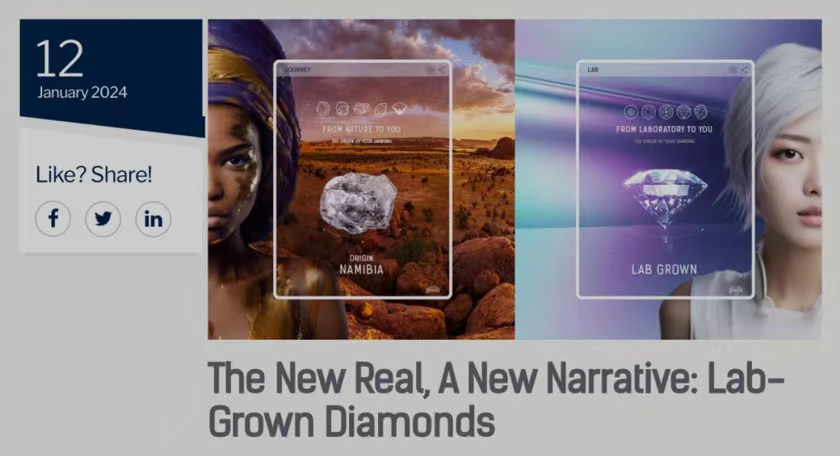We have recently communicated with dozens of friends in the industry internationally, including those engaged in the processing and trade of natural diamonds, as well as those engaged in the wholesale and retail of cultivating diamonds.
In the continuous communication, we feel two emotions more and more clearly:
1) "obsession" with natural diamonds. The reason why double quotation marks are used to show that this is not a derogatory word. On the contrary, this is a strong and almost persistent belief that natural diamonds are a promising product.
2) Accept the "slightly helpless" acceptance of cultivating diamonds. The reason why I say "slightly helpless" is that most people actually show similar "what can I do" in communication? It has too much impact on natural diamonds.
The above-mentioned "obsession" and "helplessness" are intertwined, forming a feeling conveyed to us by the current (we have contacted) industry insiders: the development of cultivating diamonds is indeed controversial, some people like it, some do not, but they must face the reality.

Source: Sarine
This situation does not occur suddenly, but can be found in history, society, economy and other aspects, which is very complicated.
A blog post we recently read by Israel's Sarine Diamond Technology Group (as shown above) may be a reference.
The blog post was published on January 12, entitled The New Real, A New Narrative: Lab-Grown Diamonds, which can be roughly translated into "New Real and New Stories: Laboratory Cultivation of Diamonds".
In the article, Sarine listed three important reasons why cultivating diamonds attracts young people--
1) As shiny as natural diamonds
A key reason for consumers' enthusiasm for cultivating diamonds is that it performs the same in physics, chemistry and optics as natural diamonds.
In recent years, great progress has been made in science and technology.
Scientists can pay attention to the necessary conditions for diamond growth, so as to cultivate products that cannot be visually distinguished from natural diamonds. Cultivated diamonds and natural diamonds are equally shining and attractive, and the same 4C standard and light performance rating are applied.
2) Suitable for various budgets
In the past, the traditional concept we came into contact with was that the price of an engagement diamond ring was almost equal to the salary of three months. But the emergence of cultivating diamonds has made this concept outdated.
Laboratory cultivation of diamonds is about 80% cheaper than (same level) natural diamonds, which allows many people who can't afford diamonds to buy their favourite diamond products, so that consumers can enjoy the luxury of diamonds without spending too much.
3) It is considered more ethical by consumers
In addition to the topic of cost, the ethical considerations surrounding diamond mining have also prompted many consumers to seek alternatives. The environmental impact of diamond mining, labour issues and sometimes controversial sources are prompting buyers to pay more and more attention to environmental protection and ethical attributes.
For modern consumers, especially millennials and Generation Z who pay attention to social and environmental issues, cultivating diamonds has obviously reduced people's concerns about the moral impact of traditional diamond mining.
It should be pointed out that the process of producing and cultivating diamonds will also emit gases and have an impact on the environment. However, the understanding of cultivating diamonds still exists in the "grey zone", which is a very important point. In any case, cultivating diamonds has been regarded as an ideal "environmental and ethical substitute", which adds a layer of value and meaning to the purchase of it.
Judging from the recent communication situation mentioned at the beginning of the article, the above three points are indeed the topics we have the most contact with. As for the controversy, whether rational or emotional, it is reasonable at the current stage of development. But in any case, we need to admit a reality: the cultivation of the diamond market is in an incremental trend, and the controversial price reduction phenomenon may only be a process of rationalising its prices.
